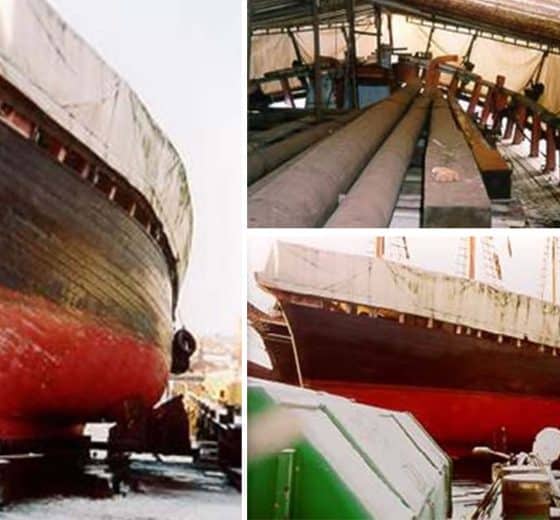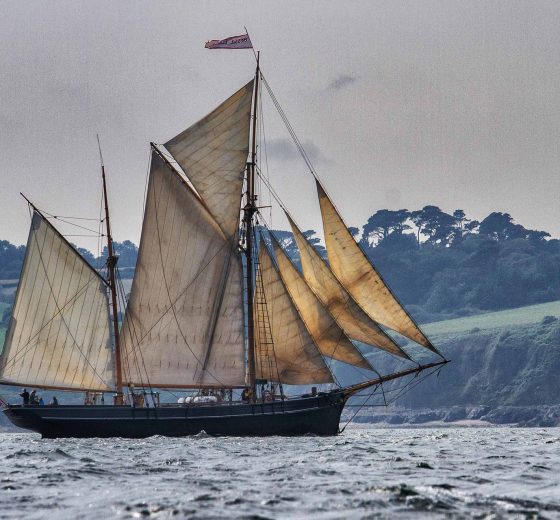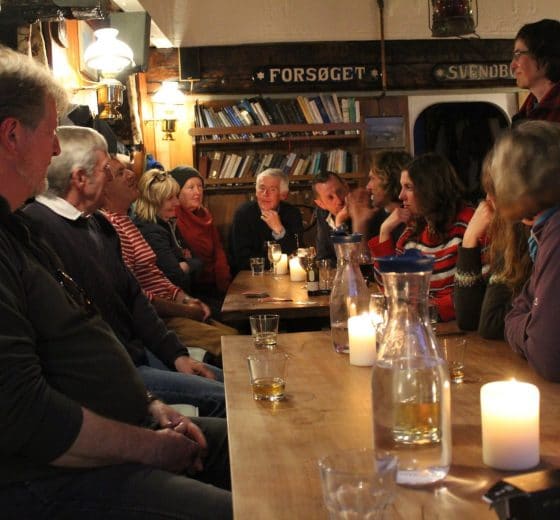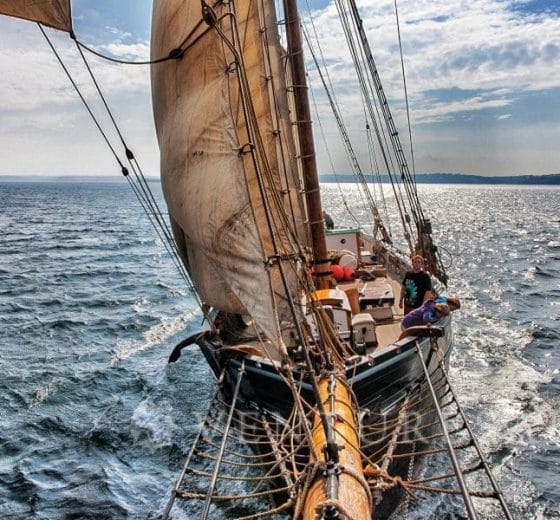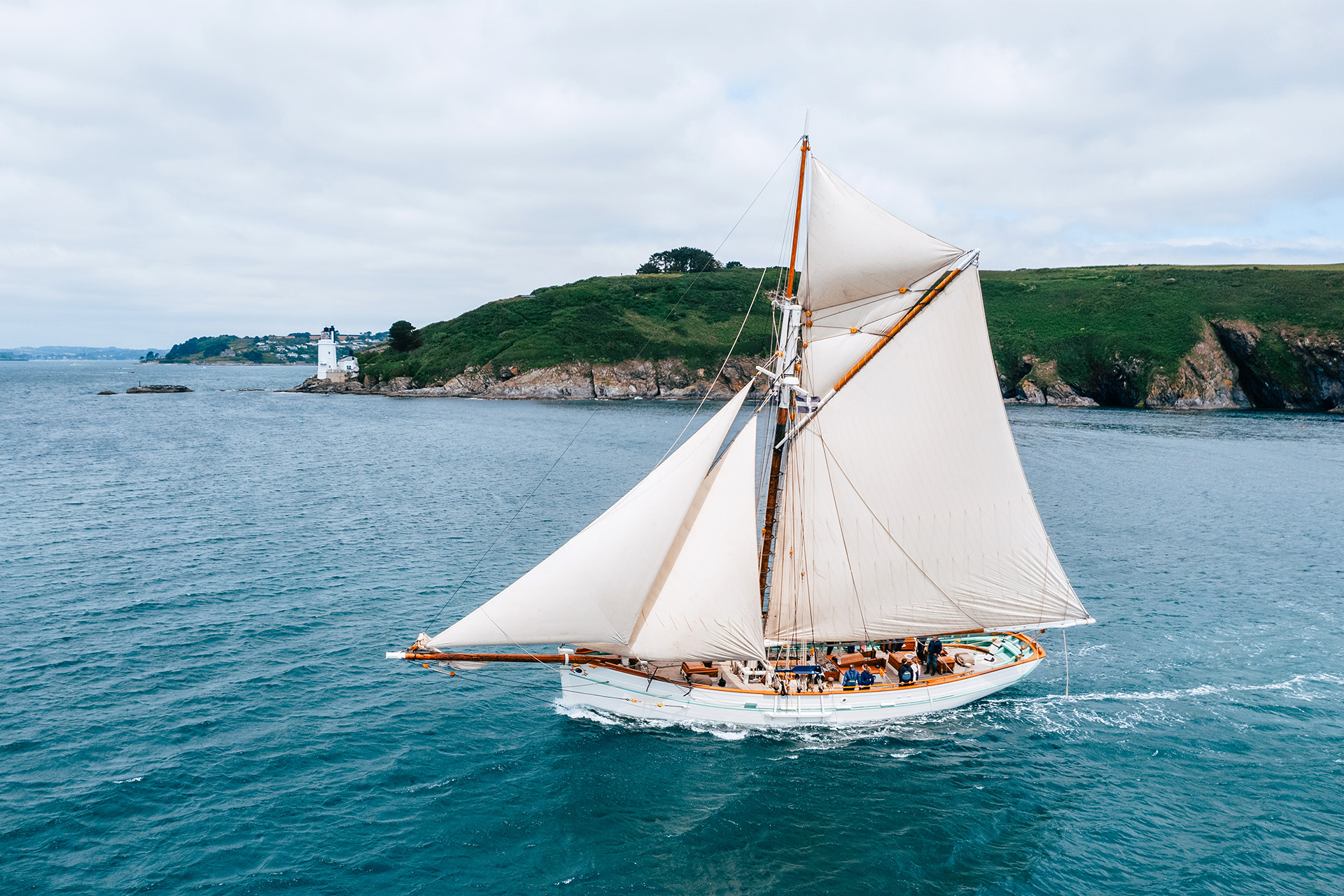Bessie Ellen’s History
Bessie Ellen started life out in Plymouth, England, being built in 1904 by William Kelly, and is now one of the last remaining trading ketches in the West Country, where there was once a fleet of almost 700.
View Bessie Ellen's sailing schedule Read more about Bessie Ellen
Originally part of a 700 strong fleet, Bessie Ellen is now one of the last west country trading ketches to still be sailing to this day. She was built in Plymouth as a speculation project between 1904-06 to keep the shipwrights in the William Kelly yard busy between jobs.
1907 – 1947
She was finally purchased by John Chichester in 1907 and named after the owner’s two daughters. Although her hull lines suggest she would’ve been designed for the Newfoundland salt fish trade with a fine clipper bow and a counter stern, Captain Chichester used her to carry bulk cargoes, such as clay, coal, salt, peat and aggregates. Sailing mainly around the British Isles and Irish waters, and occasionally cross-channel, her hold could take up to 150 tons of clay.
In January 1910 she hit the Morte Stone in treacherous currents around Morte Point and sustained severe damage to her keel. After temporary repairs at Illfracombe she was towed to Appledore for more permanent repairs. In 1916 a 25HP paraffin engine was fitted, and the main topmast was removed, stepping a pole mast instead. Bessie Ellen continued to work in the coal trade from Lydney and Newport to Appledore and Lyme Regis until the First World War.
Still owned and captained by John Chichester, after the war, Bessie Ellen was contracted to take army surplus barbed wire from Gloucester docks to Briton Ferry for melting down. It was during this contract that Captain John was tragically killed while working the locks. His family continued to run the boat together running cargo deliveries up until the end of the second world war.
1947 to 1970
In 1947 is was deemed that Bessie Ellen was no longer an economical cargo option in her home port so was sold to Captain Christian Moller from Frederiksvaerk in Denmark. She was renamed “Forsoget” (Danish for Endeavor) and continued her cargo deliveries with china clay from Charlestown to Denmark with a reduced sail rig and installation of a larger engine. Her deck hatch was increased with a much larger steel hatch added so cargo could be unloaded by quay-side machinery and Captain Moller continued running scrap iron cargo voyages until the late 1970’s before he finally laid her up.
1970 – 2000
Soon afterwards Ole Pietersen purchased her and began to convert her back to a sailing ketch. After some years and some major timber replacement, he found that due to his age and finances he could not complete the project. Bessie was towed to Svendborg and laid up in the shipyard of J Ring Andersen where she was offered for sale. She lay for 20 years with little interest shown until May 2000, when she was purchased by Cornish tall ship sailor and VentureSail director Nikki Alford.
2000 – 2024!
The bulwark planking and capping rail were replaced and the hull made watertight, and a Volvo engine was installed in the shipyard before Nikki sailed her back to Cornwall in 2001 under jury rig. She spent another year restoring and re-rigging Bessie with a new Douglas fir mast and new sails cut by James Lawrence, of Brightlingsea.
Nikki continues to sail Bessie Ellen around Scotland and Cornwall offering skippered sailing holidays to guests and is about to celebrate Bessie Ellen’s 120th birthday in 2024 with a ‘round Britain sailing tour!
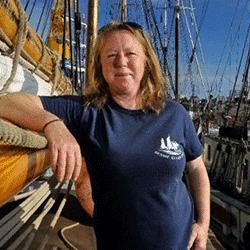
Skipper profile
Nikki Alford
Nikki, owner and skipper has proudly taken care of the magnificent Bessie Ellen since 2000.
Read Nikki Alford's Adventure Logs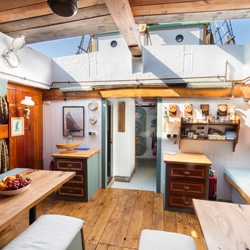
Life onboard
Bessie Ellen
Life on board Bessie Ellen is as you make it. Relax and watch for wildlife, and get stuck in with either honing your skills or learning the ropes.
Read Bessie Ellen's Adventure Logs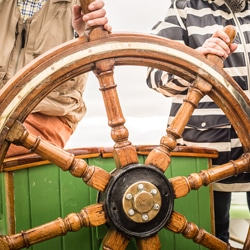
The History of
Bessie Ellen
Bessie Ellen started life out in Plymouth, England, and is now one of the last remaining trading ketches in the West Country.
Read more
